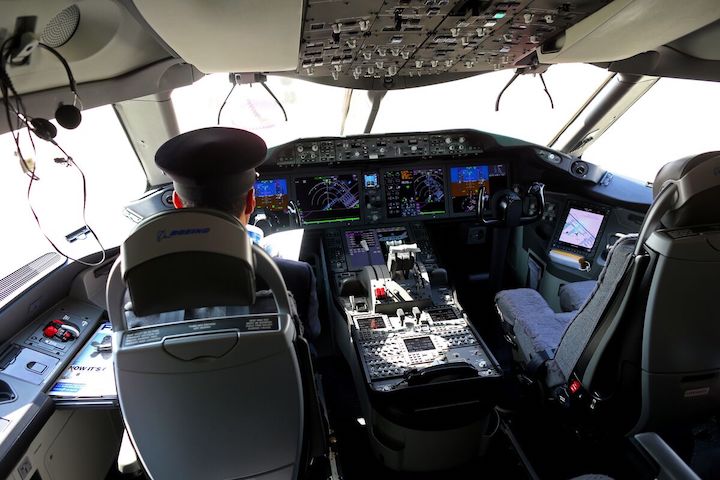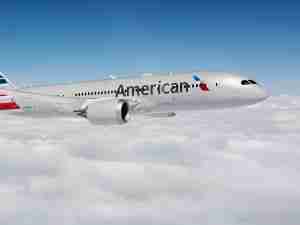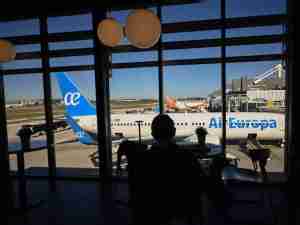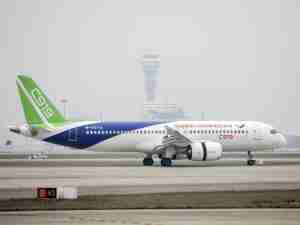Boeing Co. is warning operators of the 787 jetliner that a motor moving cockpit seats can jam, an apparent response to an in-flight incident a few days ago in which one of the long-distance planes abruptly lost altitude, injuring multiple people on board.
Investigators looking into the incident suspect a seat on a Latam Airlines Group SA 787 moved forward as it was cruising at high altitude on March 11, prompting a pilot to hit the jet’s control column and diving the plane, said a person familiar with preliminary findings who couldn’t be identified speaking about an ongoing probe.
A switch located on the rear of cockpit seats, which activates an electric motor that slides the seat up and back, can “potentially jam” if its mechanism is loose or damaged, Boeing said in a notice sent late Thursday to operators of 787s. The notice was reviewed by Bloomberg.

Boeing recommended inspecting the switches by April 26. The US Federal Aviation Administration created a special technical review board to determine whether Boeing’s actions are adequate, the agency said in a statement.
The Latam plane was on its way to Auckland from Sydney when it bucked down and then back up. The Wall Street Journal reported that a flight attendant serving a meal on the Latam flight activated the switch.
Boeing said it took the “precautionary measure” of reminding customers flying the 787 plane of a so-called service bulletin that it had issued in 2017 that included instructions for “inspecting and maintaining switches on flight deck seats.”
“We are recommending operators perform an inspection at the next maintenance opportunity,” Boeing said in a statement.
Eyewitness accounts have described how the incident sent passengers, including at least one baby, flying into the ceiling of the cabin. While no one was seriously injured, seven passengers and three crew members were taken to the hospital after the flight landed in Auckland.
Unintended Movement
Chilean authorities have started an investigation into the plunge, and flight recorders capturing flight data and sounds in the cockpit are being scrutinized for clues. According to the airline, Flight LA800 experienced a “technical event” during the flight which caused a strong movement.
The pilot seats on the 787 can be electronically moved forward or backward in two ways: by a switch on the side typically used by the pilot or a switch at the rear, according to Boeing documentation. The switch at the rear is covered to prevent it from inadvertently being activated.
“Closing the spring-loaded seat back switch guard onto a loose/detached rocker switch cap can potentially jam the rocker switch, resulting in unintended seat movement,” Boeing said in the bulletin to carriers.
Pilot seats on jetliners move at a moderate speed and are designed not to hit a plane’s control column themselves, said former cockpit crew members. It would have to be a body part such as an elbow, hand or leg that was forced into the control yoke, they said.
“The seat moves at a reasonably slow rate,” said John Cox, a former airline pilot who runs a safety consulting company. “And it would have to run for a while before it could force a person into the control yoke.”
However, it wouldn’t take a large amount of force on the controls to trigger an aggressive dive, said Ben Berman, who flew at an airline and also was an investigator at the US National Transportation Safety Board.
A continuous movement of the control column “would have a pretty strong effect” and would override the plane’s autopilot, Berman said.
The Boeing Bulletin also advised carriers that pilots could halt movement with a jammed switch by activating the second switch or by cutting power to the seat.
The 787 Dreamliner is an advanced twin-engine model made in large parts of lightweight composite materials. It’s a bigger model than the Boeing 737 Max plane that’s dominated headlines following a Jan. 5 accident when a door plug blew out on an Alaska Airlines flight.










